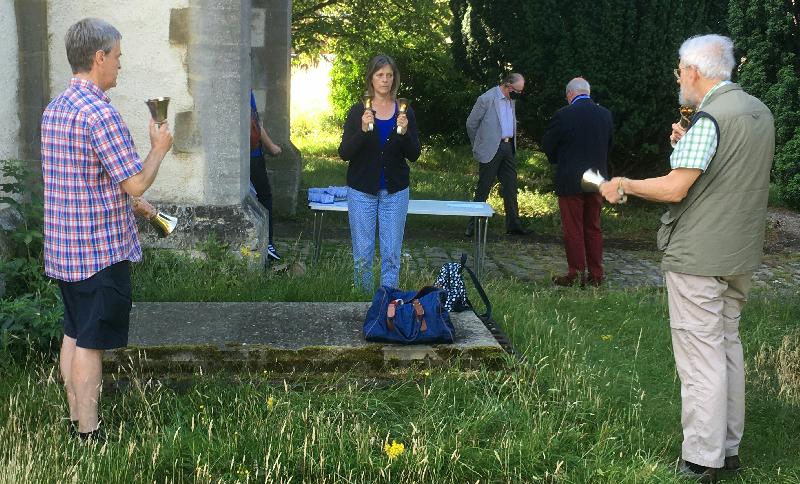
Ahead of the opening of churches for public worship, the Central Council of Church Bell Ringers did a lot of work with the Church of England Recovery Group to establish whether some form of limited ringing could be done safely in church towers. Most indicators were against it – physical exercise in a confined space with other people, touching ropes and gaining access via narrow enclosed spiral stairs – al of which offer plenty of opportunity for transmitting the virus between ringers.
But after a lot of careful work on ways to reduce risk they agreed a set of guidance that would enable some limited ringing for services in many towers.
The risk increases with time of exposure, so ringing would be limited to 15 minutes, and it would only be for services – no practices, teaching or other extended ringing. Normally there would be many ringers in the tower taking turns to ring different things, but to reduce risk only the people ringing would be present, and each would ring the same bell throughout, to reduce infection transfer via the ropes.
Bellropes are quite close together, so to maintain social distancing not every bell could be rung (but family members could ring adjacent bells).
The Church of England agreed the guidelines. The ringers devised a way to implement them at All Saints. The Rector for ringing to be part of the first service. What could go wrong?
Public Health England wanted to check that the guidance was consistent with that for other activities. Changes were made in response to PHE comments. But it all added delay, and with time running out our ringers reverted to Plan B, which was to ring handbells in the churchyard near the west door.
So ringing welcomed the congregation to the first post-lockdown service. And the sound of change ringing was accompanied by something not normally possible – the ability to see the ringers in action.

John Harrison (July 2020)
| Back to top | Return to Article list | Feedback |